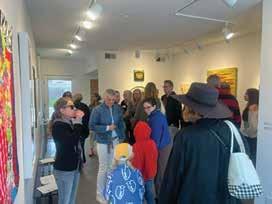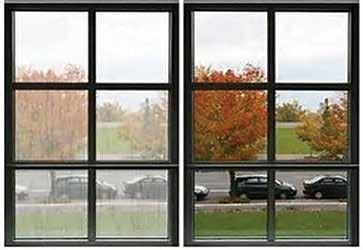COASTSIDE

A NEW GENERATION OF FARMS TAKES ROOT ON THE COAST
FROM YARD TO FARM
THE SAN MATEO RESOURCE CONSERVATION DISTRICT
















































A NEW GENERATION OF FARMS TAKES ROOT ON THE COAST
FROM YARD TO FARM
THE SAN MATEO RESOURCE CONSERVATION DISTRICT















































Planning a funeral can be overwhelming, but you are not alone.
Celebrating 60 years of serving the families of Pacifica and the San Francisco Peninsula, Duggan's Serra Mortuary family and staff are here to serve you with kindness and compassion. We are dedicated to providing personalized and professional services.
Beautifully remodeled facilities, 6 chapels
Unlimited Parking
Live-Streaming Chapel & Church Services
Indoor and Outdoor Reception Areas
Please call with any questions or visit our website. We are always here to help.


Just Scan with your cell phone to visit Duggans-Serra.com

BOARD OF DIRECTORS
Susy Castoria, Director
Cherie Chan, Secretary Rich Klein, CEO
Peter Loeb, Director
Lenny Mendonca, CFO and Founding Chair
Roy Salume, Director
EDITOR
Peter Tokofsky | peter@coastsidenewsgroup.com
STAFF WRITERS
Emma Spaeth | emma@coastsidenewsgroup.com
Sebastian Muñi-Bucheli | sebastian@coastsidenewsgroup.com
Ashton J. Hacke | ashton@coastsidenewsgroup.com
CONTRIBUTORS
Maggie Mah
MEDIA CONSULTANT
Randie Marlow | randie@coastsidenewsgroup.com
DESIGN AND AD PRODUCTION
Shari Chase | shari@coastsidenewsgroup.com
CIRCULATION
Alison Farmwald | alison@coastsidenewsgroup.com
MAILING ADDRESS
P.O. Box 68, Half Moon Bay, CA 94019 (650) 726-4424
SEND LETTERS AND PHOTOS
Your contributions are welcome. Please send photos and letters for consideration to editorial@coastsidenewsgroup.com. ©2024 Coastside News Group, Inc.


PERIODICALS MAIL PERMIT: Authorized by U.S. Postal Authorities of Half Moon Bay, CA. (USPS #233-200). Periodicals Postage Paid at P.O. Box 68, Half Moon Bay, CA 94019. POSTMASTER: Send address changes to Coastside News Group, PO Box 68, Half Moon Bay, CA 94019. SOCIAL MEDIA Find Coastside News on X, Facebook and Instagram. Sign up for breaking news delivered via email at hmbreview.com or pacificatribune.com. COPYRIGHT: All editorial and advertising contents are ©2024 by Coastside News Group, Inc. Reproduction or use in any form of editorial, news, photo or advertising content in whole or part without permission of the Coastside News Group, is prohibited. Enjoy!

Sustaining the Coastside way of life can, at times, seem daunting. Climate change, political turmoil and gun violence make themselves known on our shoreline and in our communities even if we sometimes think we might be able to isolate ourselves from these global and national challenges.
Other challenges start closer to home. All levels of our local government are facing financial challenges and are looking for ways to generate more income before cutting services. New bond measures, increased sales tax and parcel taxes will vie for approval in November. Still, our schools underperform, roads crumble and advisory councils bicker. We can’t seem to reach a consensus on ways to provide decent housing for all residents.
This issue of Coastside Magazine takes up the topic of sustainability nonetheless. What we discover is that our communities are filled with people who recognize that even small, individual acts contribute to the big picture. Lynn Adams, president of the Pacific Beach Coalition, puts the act of picking up a piece of plastic on the local beach into global perspective by explaining that the simple, tangible experience of participating in a beach cleanup can help us begin to question established ways of doing things.

gstudioimagen
Relatively small farms on the south coast profiled in the issue also make their local contributions - not just to maintaining ecosystems, but also to supporting their employees and feeding their communities.
Our reporter Ashton Hacke followed the contents of curbside trash bins to their ultimate destinations. For green yard and kitchen waste, the journey has many stages. After traveling about a hundred miles and going through a few months of sorting and decomposing, our waste winds up back in the ecosystem as compost helping farms begin the process all over again.
The success of the green bin program depends on individual actions as simple as sorting correctly and not putting the plastic bag into the bin along with the leaves and yard waste. Similarly, the state of our beaches depends on picking up after pets and not dumping paint and other household toxins onto the street.
Sustainability usually refers to environmental conditions. But I hope that these accounts show the inescapable connections between good citizenship and sustainability. When we all see ourselves as part of a civic ecosystem and act accordingly, we improve living conditions in every respect.

Peter Tokofsky editor of the Half Moon Bay Review, Pacifica Tribune and Coastside Magazine.


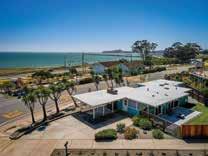








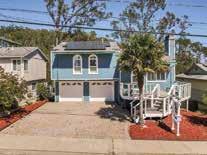





Three questions with Manpreet Singh
When Manpreet Singh was nine years old, his family left Half Moon Bay and moved to San Jose due to challenges in the restaurant business in the late 2000s and the rising cost of living in the area.
3 QUESTIONS MANPREET SINGH
Several years later, Singh got a fresh start when he left San Jose and his family to attend Fordham University in New York.
While his family eventually returned to the coast, splitting their time between Half Moon Bay and San Jose, Singh sought ways to reconnect with the small town of his childhood while on the East Coast. This desire led to the development of his thesis on agritourism, the study of agriculture and tourism, and the authenticity of the town's spirit, with Half Moon Bay as the subject.
After graduating with a degree in urban studies and architecture this past spring, 22-year-old Singh returned to San Jose, where he now works at his family-owned restaurant, Dawaat Indian Cuisine, and stays on the coast whenever he can. Coastside Magazine caught up with Singh to talk about the hometown he has missed since the age of nine.

1What aspects of growing up in Half Moon Bay influenced your decision to choose it as the case study for your thesis on agritourism and authenticity? One of my requirements for my major was to write a thesis, and I thought, okay, I might as well write something like that. As a child, the pumpkin fest was a magical time filled with joy and excitement, bringing the entire community together in celebration. I remember the vibrant colors of the pumpkins, the festive atmosphere and the shared sense of pride among residents. These memories left a lasting impression on me, highlighting the importance of maintaining the authenticity and spirit of Half Moon Bay amidst the changes brought by agritourism. In writing my thesis, I aimed to capture the essence of these experiences and emphasize the significance of preserving the town's unique character. For me, the Pumpkin Festival symbolizes Half Moon Bay's heart and soul, a reminder of the strong bonds and traditions that make this community so unique, showcasing how agritourism can enhance or challenge the town's authenticity.
2
What do you think Half Moon Bay's current relationship with agritourism and authenticity is? It's a bit tense, I believe. An example is the traffic congestion on Highway 1 and Highway 92, which has become a significant issue for the town. The essence of Half Moon Bay lies in its charming, small-town feel and rich agricultural heritage. The farmers, who have cultivated the land for generations, are the backbone of our town's authenticity. By putting all this pressure on the farmers, their dedication to sustainable farming practices and their deep connection to the land define the character of Half Moon Bay. However, the influx of tourists and the commercialization of farm experiences have put additional strain on local resources and have, at times, diluted the genuine farming culture that residents and visitors alike cherish. Ensuring that agritourism initiatives are sustainable and respectful of the town's traditions is crucial for preserving the true spirit of Half Moon Bay. By supporting our farmers and celebrating their role in our community, we can strike a balance that honors our agricultural heritage and the benefits of agritourism to our town.
3
What are some of the ideas you investigated while working on your thesis on how Half Moon Bay can improve its relationship with agritourism and authenticity? Balancing growth while preserving Half Moon Bay's genuine charm is crucial to safeguarding its identity for future generations. In my interviews with people in Half Moon Bay for my thesis, I found that the Coastside chamber is doing a fantastic job of connecting people on the coast who have been there for years to find resources and also each other. When I was younger I saw my parents struggling and asking for as much help as they could get. At the time, there was no one and nothing that could help them. Not only were they immigrants, but they also didn't have many people to reach out to. I often thought, “I wish there were people to help my parents.” They were even doing some farm and field work just to make a little money. I always hoped someone would have been there to help. Now, I want to be a strong voice that calls on the community to help not only the farmers but also others in need who are struggling to make ends meet.
COASTSIDE



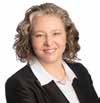
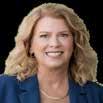


















New Location, New Owner, and When No News is Good News

Sometimes you’re so good at something, you don’t need to jazz it up. That’s the case for the shoe repair shop at Shoreline Station. Perhaps its official name is Shoreline Shoe Repair, but the sign says it simply: “Shoe Repair Shop.”
Every one of the 34 reviews of the shop on Yelp gives it five stars, with praise ranging from calling the proprietor “Harold the Magnificent” to this: “I love the maestro! He does great work making my work shoes look awesome. He has also helped friends get their backpacks and suitcases fixed. Lovely man!”
So it’s understandable that panic set in when rumors on social media said the shop had closed down.
Now a whiteboard in the window says the closure is temporary and offers a number to call, if necessary.
Harold did not immediately return a call from Coastside Magazine, but we wish him well and look forward to having him back. After all, as one reviewer wrote, he’s “friendly, interesting, and funny. All that and great repair!”

The spot at 101 Main St. in Seaport Landing is now well established as a pizza joint. After transitioning from “Pizza Mike’s” Panificio to Half Moon Crust, the oven has changed hands again and become part of the North Beach Pizza family. New owner Allison Ramirez told Coastside Magazine that she is very excited about this change and that her team is “super eager to convert Half Moon Crust into another North Beach Pizza restaurant, but with an ‘Express’ concept.” The new branding makes Half Moon Bay the seventh location for the popular pizza company that has been expanding beyond its San Francisco roots down the Peninsula and across the Bay. Ramirez says they’re start with a soft opening phase, getting their signs up and helping locals get used to the new brand.
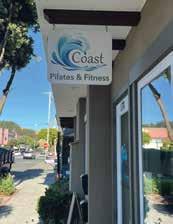
The boutique studio Coast Pilates and Fitness moved from Shoreline Station to 578 Kelly Ave. “I outgrew my old location and absolutely love my new spot on Kelly,” Pamela Harris told Coastside Magazine. “I feel much more integrated into the downtown community.” The new location retains the compact feeling of the previous spot, with the essential equipment for various workouts and physical therapy activities neatly set out in the tidy shop.
This + That is a monthly feature focusing on new businesses and business news on the Coastside from Pacifica to Pescadero. To be considered for future listings, email editorial@coastsidenewsgroup.com.



By Sebastian Miño-Bucheli
courtesy Pacific Beach Coalition and Coastside News
Pacific Beach Coalition named nonprofit of the year
Lynn Adams is the president of the Pacific Beach Coalition, a nonprofit made up of volunteers who organize monthly beach cleanups from Daly City to Half Moon Bay as well as monthly habitat restoration efforts in Linda Mar, Pacifica. The group also has special cleanups after July 4th and on Earth Day, and provides resources for educators and others who want to make a contribution to clean beaches.
Pacific Beach Coalition was recently named nonprofit of the year by Assemblymember Marc Berman for cleaning and restoring San Mateo County’s beaches and creeks.
Where did the success come from that made the Pacific Beach Coalition the nonprofit of the year?
Assemblymember Berman came to Whale Fest and I think he learned a little bit more about our organization and he saw just the amazing, educational thing that was happening and the spirit of the community. His assistant joined us at the VIP tour, so she got to see the volunteers in action and learn more about it. I can tell you all day long about this or about that but sometimes when you come and you experience it, you understand the value of what’s going on.
What local wins have there been recently?
I feel like every cleanup is a win, right. We get new people coming out and experiencing it for the first time and I was just at the Sharp Park cleanup on Saturday and there was a team from Menlo Park that came out.
Cornerstone is the name of their company. They got to experience this cleanup as a group and what a highlight that was. You make a difference for the environment together and hopefully learn a few things that will inspire them to do different things at home and at work.
And that to me is the win. Every cleanup is a win when we get new people and dedicated people that come back over and over.
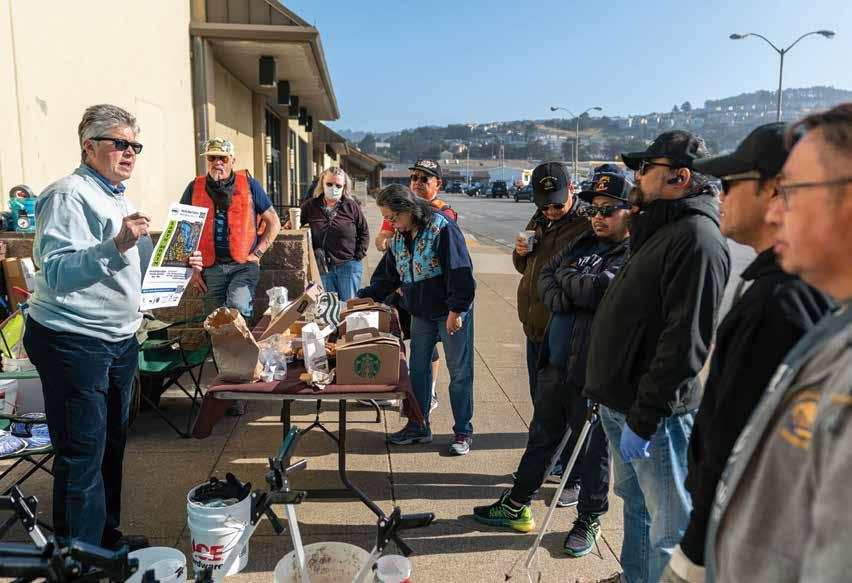
What are some major challenges that the Pacific Beach Coalition is looking to tackle in the next coming years?
I'd like to just say that there are amazing environmental heroes here in the Coastside. And because of these environmental heroes way before me, we don't have a freeway coming across from 380 to Linda Mar and we have a tunnel instead of going up and over the mountain.
The biggest challenge is to really eliminate litter and protect the planet by changing people's views of plastic, the use of plastic and getting policy through.
We are a microcosm but what's happening here is happening everywhere and it's going into the rivers, the creeks and the lakes and people aren't aware of it. That's why we do what we do to raise awareness so people can start witnessing it, feeling it and experiencing it and we have to do something.
Linda Mar Beach keeps showing up on lists of the most polluted in the state. What are the prospects for breaking this cycle and improv-
ing the local coastal environment on a long-term basis?
LMSB is the most polluted because of the runoff flowing from San Pedro Creek. Every storm drain from the back of the valley and much of Linda Mar drains into the creek carrying with it oil, gas, antifreeze, pet waste, cigarette filters, litter and anything that is on the streets, sidewalks and even people’s yards. Car wash runoff, paint brush cleanup and anything else that we do in our driveways flows to the creek. In addition, the sewer pipe infrastructure has aged and is failing, which is why all sewer laterals need to be checked and replaced before every home sale.
It's wonderful that the coalition is able to attract more and more people to participate in cleanups and habitat restoration. Do you also think about how to address some of these issues at the source? What shifts in policy and/or attitude are needed to preserve the precious natural gifts of our Coastside?
This is a very BIG problem that can only be solved by a universal commitment to making our city healthier and cleaner for the environment.





Individually we must all keep our streets and yards clean, pick up and dispose of pet waste properly, manage rain runoff from our homes to be absorbed rather than flooding the streets, and keep our vehicles functioning cleanly. We also can support funding for the city's efforts for the creation of rain gardens and replacement of sewer infrastructure. Understanding the problem is the first step which is why the Pacific Beach Coalition talks about it at all of our cleanups and our events. The same thing is happening everywhere, no matter what town you live in, but the discharges may become diluted more than the outflow of San Pedro Creek at Linda Mar which is a bay of sorts.
You've identified pollution from plastics as a major threat to our coast. We can pick up and dispose of the plastic, but there is still the overwhelming issue of climate change. How can we focus on picking up the small stuff when that issue is looming?
Through our cleanups we want people to have a tangible experience picking up litter and seeing what things are out there flowing into the ocean. Most of it is plastic, which is made from petroleum. Petroleum is harvested from the earth, refined, manufactured into something, sold, used and then discarded (often after a single use). Between every step there is shipping and every stage of the process releases carbons and methane and contributes to climate change. This is how plastic relates to climate change. And learning/experiencing this might help us question what is sold to us
and the impact to the environment. Plastic breaks down into smaller and smaller pieces which are harder to pick up and easier for animals to ingest. They are impossible to remove from the lakes, streams, ocean and water bodies becoming food and toxins to all who live in these waters and feed on the harvests.
So our PBC work is to help people learn about these hazards and to grow the voices demanding producer responsibility and systemic changes in the products we are sold.
Each year the Pacific Beach Coalition names an Earth Honoree and slogan for Earth Day. For example, in 2023 the honoree was the nudibranch, a mollusk that lives in marine environments, and the slogan was “ocean hugs for sea slugs.”
So, I want to ask you in advance, what are the plans for next year? What animal is going to be featured for the Earth Day festival?
We started this process in May, right after Earth Day. We had some suggestions and we narrowed it down from like six to two. Just this month, a week ago, we finally hammered it out.
We had a terrific conversation about, “Hey, what about these two species?” We had presenters who gave the specialness of their species and it was between the marbled murrelet and the pelican and the pelican won by three votes. People can vote on a slogan during Fog Fest. COASTSIDE
The interview was edited for length and clarity.


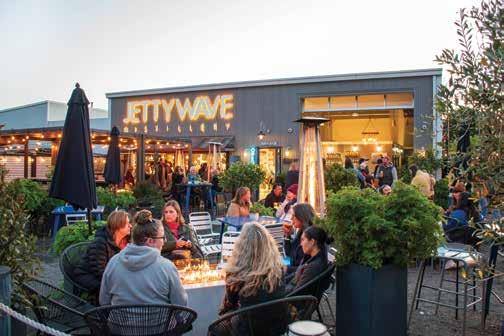
By Ashton J. Hacke and Peter Tokofsky
by Ashton J. Hacke
New farmers bring sustainable methods to a venerable tradition
Observant shoppers at local farmers markets might notice not just a wide variety of produce, but also different varieties of farmers. On the one hand, the Coastside can boast about being home to numerous legacy farms that have harvested locally for three or more generations. Andreotti Family Farm will celebrate its centennial in 2026. Guisti and Iacopi Farms are not far behind. They provide Coastside staples of brussels sprouts, artichokes, beans and much more.
Now those Coastside pioneers are joined by another group of farms who, though in their first generation, are building legacies of respect for the land and community by practicing sustainable farming methods and collaborating with local organizations to support healthy living.
We stopped by some of the newer farms during peak season to see how (and what) they’re doing.
Founded in 2008 by John Vars, Mike Irving and Teresa Kurtak, Fifth Crow Farm is an organic farm in Pescadero. The three farmer-founders met while attending the Farm and Garden Program at the University of California, Santa Cruz.
“Fifth Crow Farm sees it as an imperative to farm with future generations in mind,” their website states, noting that the farming community is aging and the number of farms is going down.
It hasn’t taken long for the newcomers to make their mark. They were named co-farmers of the year at the 52nd annual Mel Mello Farm Day earlier this year, an honor that until now had been reserved for the old guard.
Fifth Crow endeavors to farm in ways that respect the land and the people who work on it. “To us this means stewarding our land in a way that not only respects but improves habitat for wildlife and builds better soil for future farmers. It also means creating a healthy, fulfilling and fair work environment, and providing our customers with the best tasting, most nutritious, highest quality food possible.”
Kurtak explained that, at Fifth Crow, organic “means foundationally soilbased and does not have toxic chemicals and toxic things that are going into


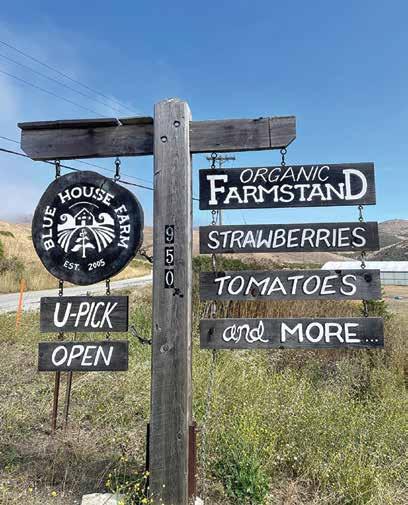

Below:
Bottom
the farm
lies in the
to

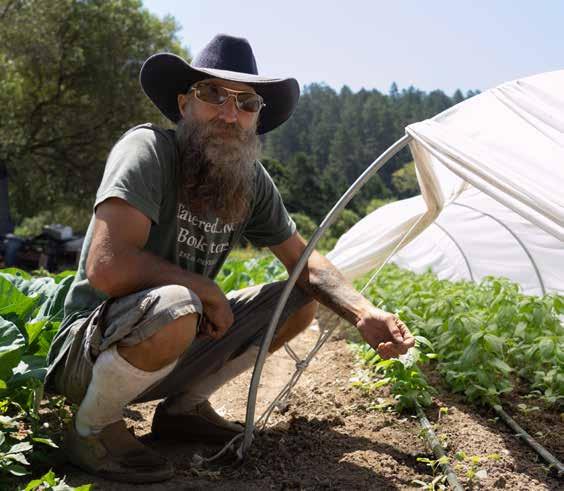
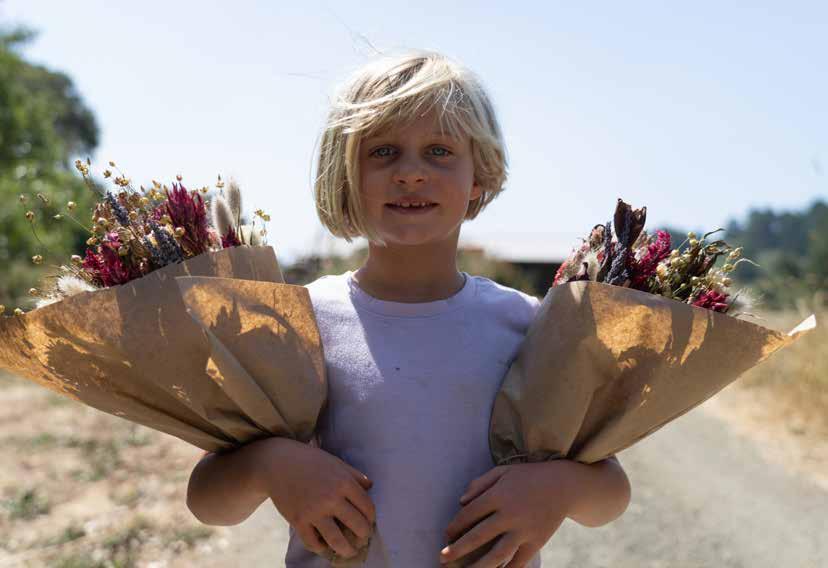
the environment, into the people that work with the food, and into the consumer. Which includes supporting our farmworkers with work during this process year-round.”
One way the farm works toward this goal is by extending its growing season throughout the year. Growing and drying beans and flowers to be cleaned and sorted during winter helps them provide continuous work for their employees. While these activities may not be as profitable as selling right off the stem, they contribute to ensuring stability for their team. Additionally, the farm is working with the county to get approval to build housing on their property to support their workers and their families in the long term.
“It’s not just about a particular field and what we’re growing in it; it’s also about thinking about the markets and the people who are working for us,” Kurtak said. “We want to do the best we can to treat our workers the way we would want to be treated and keep them employed year-round, just like we want to be employed year-round.”
Kurtak sees the farm day award as a sign that the farming community is beginning to take organic and sustainable farming seriously.
“The demographic of farmers is changing, with younger farmers
bringing fresh perspectives and innovative practices,” Kurtak said. “These new farms differ from traditional ones, reflecting the evolving preferences of consumers who seek sustainably-grown products. It's encouraging that these farms are being seen as a vital part of the long-term agricultural community, signaling that this type of farming is becoming more common and essential.”
Mathieu Simms of Simms Organics began his journey into sustainable and organic farming after being inspired by farmers at the Half Moon Bay and Pescadero farmers markets and their farm-to-table approach.
“Organics to us means you must create a biodiverse environment,” Simms said. “No one insect can dominate. In an organic system, you walk through a farm, and you're gonna see ladybugs, you're gonna see snakes, you're gonna see rabbits, gophers, And so that's the main difference, organic farming is growing and living alongside wildlife and pests.”
Simms' dream of opening his organic farm became a reality after he read an article in Coastside Magazine about farmland that his grandfather used to farm in Pescadero becoming available for lease. While his
grandfather grew New Zealand spinach, Simms now farms kohlrabi, lettuce, dry-farmed tomatoes, lemon cucumbers, Genovese basil and pea shoots. His sustainable practice includes using organic compost and watering plants in drip irrigation, rather than with overhead watering, to reduce the use of water.
“That's the sustainable part of farming — keeping the soil a living organism,” Simms said. “If you take a bucket of soil from our field and put it under a microscope, you'll see it teeming with microorganisms. If you take soil from a chemically treated field where glyphosate is used and look at it under a microscope, you won't see those living organisms. There will be very little activity in the soil. That's the essence of sustainable agriculture.”
Brisa Ranch, which started in 2018 on the coast south of Pescadero, leases its land but is still committed to long-term efforts to ensure soil health and sustainability. In partnership with nearby Pie Ranch, Brisa Ranch uses the land to support local food hubs and markets, educate youth on sustainable farming practices and restore natural habitats around the farm.
“The idea is that even after we are no longer leasing the land, it can be used by the next farmer with healthy soil teeming with life,” co-founder Veronica Mazariegos-Anastassiou said. “It's also about providing a place for microorganisms to grow because, while the farm feeds people across the Bay, we did take a part of the insect's habitat.”
Mazariegos-Anastassiou said that agriculture and conservation have often been at odds, where you either focus on production, neglecting the land, or prioritize conservation and reduce food production. Mazariegos-Anastassiou, who holds a master's degree from Cornell University in applied economics and management with a focus on food and agriculture, believes these goals do not have to be mutually exclusive. Agriculture, she said, can contribute to conservation efforts by adopting certain practices.
One example came in the aftermath of the 2020 CZU Lightning Complex Fire in the Santa Cruz Mountains, which came dangerously close to the farm. Instead of ignoring the burnt land around the property, Brisa and Pie ranches chose to reinvest in the land by working to prevent the return of invasive species and helping restore Cascade Creek that flows through the area. Restoring the surrounding habitats brings nutrients and microorganisms back into the soil itself, showing a balance between agriculture and conservation.
Brisa Ranch also works to ensure that healthy organic food is accessible to everyone. “We were brought together by our love and reverence for soilbuilding and growing healthy, organic produce that can be accessible to a broad community,” Mazariegos-Anastassiou said about the goal of the Ranch’s founders.
“To that end, from the very beginning, we started selling mainly to businesses and institutions like school districts, hospitals and food banks and contributing to the San Mateo food hub to promote more small and mid-scale diversified production instead of just selling wholesale.”
Blue House, with fields in Pescadero and San Gregorio, is another firstgeneration farm. Founded in 2005 by Ryan Casey on land leased from the Peninsula Open Space Trust, the farm is certified organic. Casey became interested in farming in college and completed an internship with the Center for Agroecology and Sustainable Food Systems at the University of California, Santa Cruz.
With the unique locations of its fields, Blue House responds to the microclimates in the environment and promotes biodiversity by growing crops throughout the year that are best suited to specific locations.
The farm also operates a farmstand in a wooden barn and offers U-pick programs during strawberry and pumpkin seasons. COASTSIDE

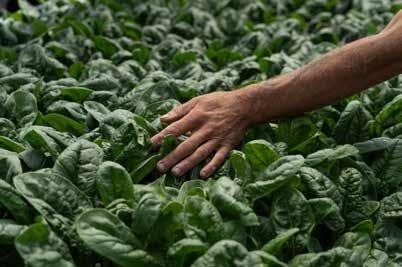

Story and photos by Ashton J. Hacke

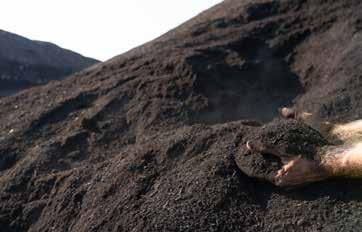
Ever wonder what happens after you fill your green cans? We’ve got the dirt
When I asked my editor if I could travel to Gilroy to visit a composting facility for a story, he quipped, "So you want to get the dirt on the story?" It's not the worst journalism joke I've ever heard, but it accurately described my assignment to uncover what happens to Coastside trash after it’s put on the curb.
Recology provides weekly curbside pickup for your bins if you live between El Granada and Pacifica. Items from the black trash bins are transported to Ox Mountain Landfill, a Republic Services-owned facility in the mountains separating the coast from the inner bay. Your recycling items in the blue bin go to San Jose, where a third-party company sorts them into different recycling classifications to be broken down and reused, often as items such as Amazon boxes.
Lastly, Recology takes the contents of your green composting bins even farther from the coast to South Valley Organics in Gilroy. The fresh compost from this facility goes to farms in Watsonville and Gilroy, helping to enrich their topsoil, the top 2 to 8 inches where most of the Earth's biological soil activity occurs, and produce more abundant crops. People can consume these crops and use their scraps to start the composting process all over again.
The composting journey starts with you, our Coastside readers, when you put food scraps and yard materials into the green bins and place them by the curb. Recology collects these compost materials separately from recycling and trash and transports them to a transfer station in San Bruno. There, workers remove any plastic and other materials that don’t belong in the compost.
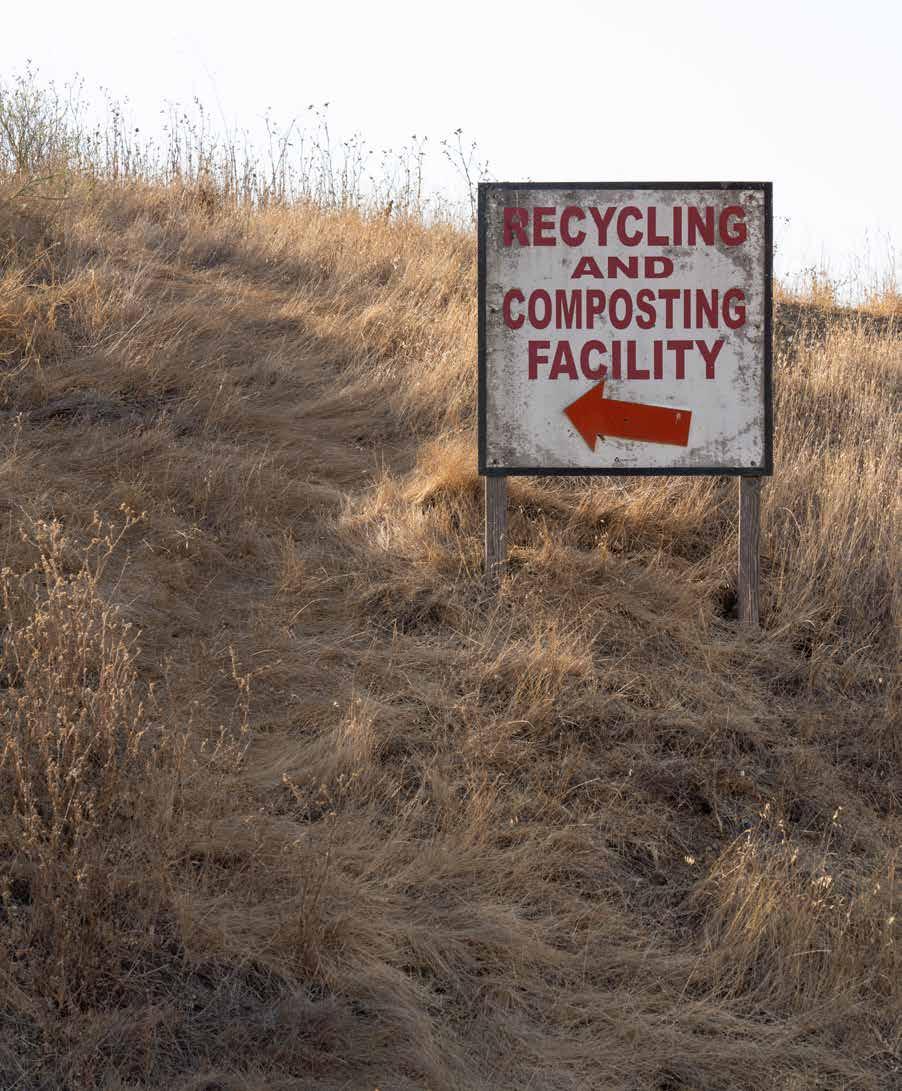
Recology staff report that the public often puts items into the compost bins that shouldn't be there, such as fecal matter from materials like cat litter, plastic bags used to collect yard waste and the clean tops of pizza boxes, which should be separated from their soiled halves and placed in recycling.
The remaining yard and kitchen waste is loaded onto semi-trucks in San Bruno and transported to South Valley Organics in Gilroy.
This plant is one of eight Recology composting facilities across the Bay Area that turn waste into fertilizer for farms and other industries. The facilities differ based on the local needs of the city's waste supplies. Some use the aerated static pile system, where compost is put in large piles with a mesh grate underneath to filter non-compostable materials until only fertilizer remains, predominantly for areas with more food scraps in their compost bins.
South Valley Organics uses a windrow method, where compost materials are laid out in rows outside until fertilizer forms, as it receives about 70% yard materials and only about 30% food scraps.

The entire windrow method at Recology's composting facility in Gilroy, spanning 13 acres, takes about 12 weeks from arrival to transform into fertilizer. As someone who recently had to follow our compost waste across this facility in a record heat wave, not the most incredible smell, let me tell you a little bit about the process:
Semi-trucks from San Bruno arrive at South Valley Organics as early as 7 a.m., carrying compost material, or feedstock, from Coastside cities and the South Bay. The site typically receives 1,200 tons of feedstock weekly, or 200 tons daily, five days a week. The trucks dump the feedstock on the dirt in the open-air facility. One individual walks around the pile, picking out as many plastics as possible, highlighting the importance of self-separation of compost
materials at home. At this stage, the heap looks like a standard trash pile with large yard items, half-eaten fruits, vegetables and eggshells sticking out.
After an hour or so of being picked over, the feedstock is fed into a machine that chops up the material, making it look like it went through a paper shredder. The resulting material resembles spongy strands of dirt found on a forest floor. This forest ground-like material sits in a large heap for a week after being chopped up.
One week later, they place the chopped-up material in 36 long rows across the 13-acre facility for an eight-week process. Here, microorganisms and bacteria further break down the content,


transforming it into finely grated, light brown-colored dirt. Here and there, larger clumps stick out. Every two days during this period a machine moves down the rows, rotating the dirt from the bottom to the top and spraying water. This process provides the microorganisms and bacteria with the essential elements for composting: air, water and food. The microbial breakdown can heat the dirt three feet deep in the rows to over 135 degrees Fahrenheit. Even during last month's record-breaking heat wave in the Bay Area, steam could still rise from the piles due to the 30-40-degree temperature difference from the 100-degree Gilroy area.
After eight weeks, workers pick up the chopped and curated feedstock from the rows and feed it into a screening machine. The screening machine separates the now soil-like substance from any remaining trash or items that cannot be broken down during the windrow process,
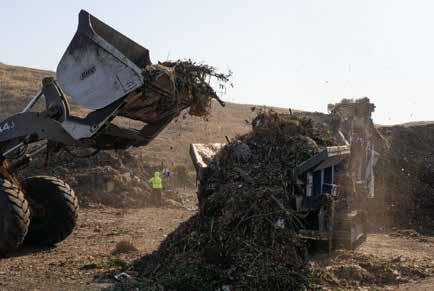

stopping anything larger than a quarter from passing through. The soillike material sits in a heap for three weeks, turning a darker brown before being shipped out to farms to help build up their topsoil and support fertile plant growth. Over 100 tons of compost leaves the facility a week, with ninety-five percent of the compost material going to farms and the remaining five percent to landscape companies to help fight erosion.
While compost from this facility doesn't return to Coastside farms, the US Composting Council claims that current efforts to keep compostable material out of landfills can significantly reduce greenhouse gas emissions. By recycling and converting waste into fertilizer at a compost facility instead of sending it to a landfill, we can prevent the release of potent greenhouse gasses.
Additionally, composting recycles carbon by returning it to the soil, helping to rejuvenate struggling crops, improve topsoil quality and even prevent erosion of needed farmland, according to agrologists. COASTSIDE
By Peter Tokofsky
According to Kellyx Nelson, executive director of the San Mateo County Resource Conservation District, the agency she runs could be “the best kept secret” around.
Indeed, not many people know that a government agency with a $17 million annual budget and a staff of 25 is housed in offices in Half Moon Bay.
Nelson describes the RCD as “a public agency that exists for the purpose of helping people manage the land.” Most of the RCD’s work takes place in the western half of the county, that is, on the Coastside, where it helps farms, ranches, cities and others to manage resources by providing “comprehensive, integrated services for all aspects of natural resource management” in San Mateo County, according to its website.
The 96 resource conservation districts in California are authorized by the state’s public resources code to conserve soil and water, control runoff, prevent and control soil erosion, manage watersheds, protect water quality and develop water storage and distribution.


Clockwise: The RCD helps monitor the Pescadero marsh for various water quality parameters to understand past projects and plan for future work.
Staff from the Resource Conservation District help build a path at the headquarters of Puente, the south coast nonprofit organization.
What appears to be ladder in the creek is actually a scanner that monitors when the Steelhead and Coho that have been micro-tagged pass by.

The San Mateo RCD fulfills this mission by participating in various projects. It has helped maintain the Fitzgerald Marine Reserve by working with partners to implement stormwater management practices, water quality studies and develop outreach to local communities about gardening practices that can make runoff cleaner.
The agency also received a grant from the state to work with San Mateo County to remove hazardous trees along fire roads in El Granada’s Quarry Park, a project that should wrap up this summer.
Other projects that the RCD has participated in along with other agencies and organizations address wetland restoration, explore development of a farmers cooperative, help the region prevent and recover from wildfires, and contribute to improving conditions for steelhead and coho salmon to migrate upstream. In one project, members of the RCD helped complete pathways at the headquarters of Puente de la Costa Sur, a nonprofit organization in Pescadero.
Recently the RCD has also tried to deepen “thinking and practice regarding justice, equity, diversity and inclusion.” Barb Kipreos, who was hired last year as the engagement officer for the agency, describes her role as “helping to deepen relationships, broaden engagement, and continue the RCD’s weaving of JEDI … principles into their work.”
The San Mateo County RCD prides itself in being a nimble form of local government that provides on-the-ground environmental protection. Its newsletter is even called “Boots on the Ground.” By serving as a hub for conservation, the agency says, it works toward a “vision that Coastal San Mateo County will be environmentally, economically and socially sustainable.” COASTSIDE
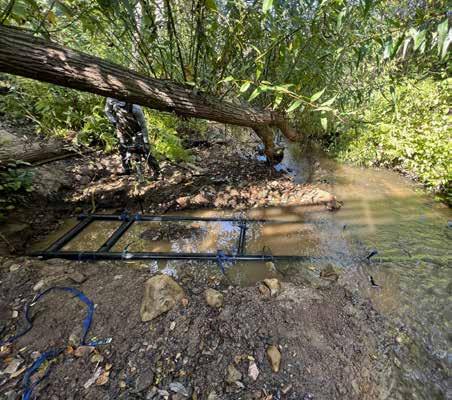
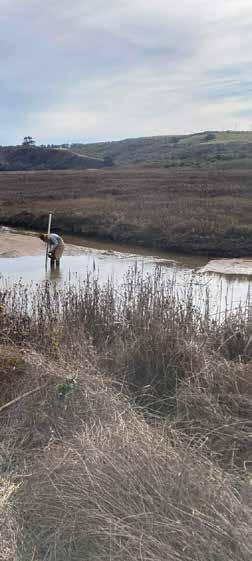





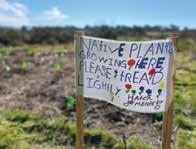


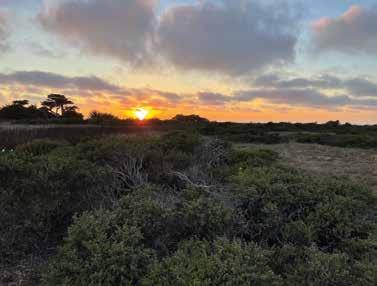
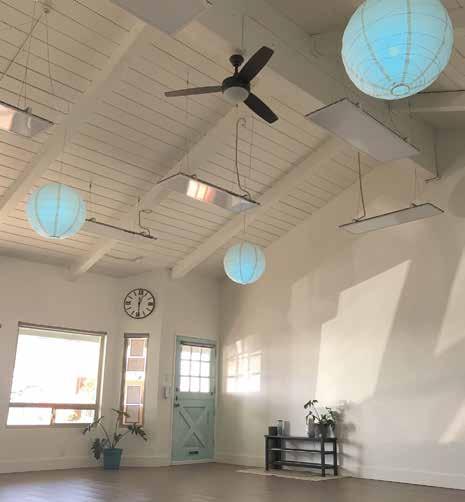





A yoga studio is where we go to breathe, move, and explore, so it makes sense that all of the materials around us should be sustainably sourced, thoughtfully made, and carefully installed.
Swell Yoga’s studio space is designed with you and our planet in mind using:
• Non-VOC paint
• 100% renewable energy for heating
• Cork floors: sustainable, hypoallergenic, antimicrobial, antibacterial, and naturally resistant to mold and mildew. It also acts as a thermal and acoustic insulator, keeping our studios warm and quiet.
To discover further measures Swell Yoga has taken as a certified member of the California Green Business Network, please scan the QR code.



Sept 6 Oct 6, 2024





Juror: Andra Norris, Andra Norris Gallery




Fri, Sept 6 Sat Sept 7
Tickets on Sale mid-August on www.Eventbrite.com
Advance Tickets Only — No tickets at the Door

The Cabrillo Unified School District (CUSD) has been honored with the prestigious 2024 U.S. Department of Education Green Ribbon Schools District Sustainability Award! This accolade celebrates the district’s environmental stewardship, collaborative initiatives, and progress towards sustainable practices.
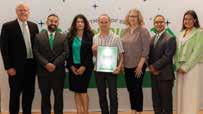




CUSD’s Five Key Environmental Sustainability Achievements include:
1. Thriving school gardens, waste diversion, and water resilience efforts on every campus
2. Integrating environmental literacy activities across all grade levels
3. Engaging community partnerships for outdoor learning and field trips
4. Innovative green career technical education offering hands-on learning experiences
5. A dedicated Environmental Sustainability Committee promoting collaboration among students, staff, board members, and partners
This significant achievement reflects years of dedicated efforts by the CUSD community, including students, teachers, families, and partners. Notable contributions come from The HEAL Project, Coastside Land Trust, and San Mateo County Office of Education, who provided essential services to our students and schools.
The driving force behind CUSD’s success are its students, who’ve been steadfast champions of environmental literacy and sustainability. They inspire our continuous growth and remind us of the importance of building a more sustainable future.
The CUSD Governing Board has supported the district’s Environmental Sustainability Committee and literacy goals since their inception five years ago. Special recognition goes to former Superintendent Dr. Sean McPhetridge, who mapped our sustainability strategy, and current
Superintendent Amber Lee-Alva, who continues to guide our progress.
Several staff members deserve applause for incorporating Environmental Sustainability into their teaching, such as Sonia Myers at Cunha Intermediate School and Joseph Centoni at Half Moon Bay High School.
The collective contributions of individuals and organizations across CUSD have made these esteemed California Department of Education and U.S. Department of Education Green Ribbon District Sustainability Awards possible. We extend our sincere gratitude to all.







FLOURISH!
Wednesdays 2 - 6 PM IN PACIFICA
Saturdays 9 -1 PM IN HALF MOON BAY
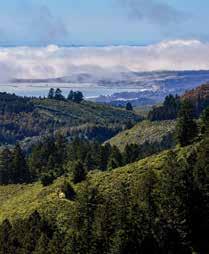
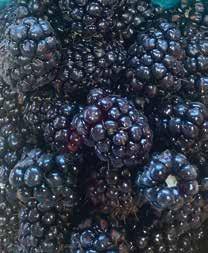
CELEBRATING 10 YEARS of Midpen accomplishments made possible by voter-approved Measure AA, including:
• Opening La Honda Creek Preserve
• Protecting Cloverdale Ranch Preserve
• Planning the Purisimato-the-Sea Trail, and more!

openspace.org/maa
Since we started our Envirotokens program, we’ve donated $1.2 million to community organizations, kept 12.7 million bags out of landfills, and saved 17,000 trees.
Thank you to our community for joining in our efforts to leave a lighter footprint.
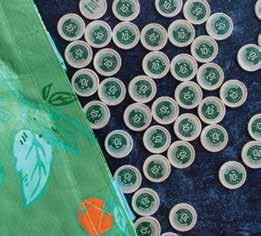
The Andersen® 100 Series Windows and Patio Doors are budget-friendly, energy-efficient and environmentally responsible. Made of Fibrex®, this is a beautiful choice if you are renewing your home. Fibrex is a composite material that is 2X stronger than painted vinyl and boasts a 12X thicker finish. It is suitable for every environment, especially coastal areas.
Before you select your new windows and doors, schedule an appointment with Dolan’s Showroom in Burlingame. Our friendly, knowledgeable staff invites you to come in and discover all the benefits of the Andersen 100 Series made of Fibrex. You’ll be glad you did. For dozens of helpful articles, visit our website.


Last month’s top stories
Editor’s note: The following pages offer a synopsis of some of the major stories from the Coastside News two publications, the Half Moon Bay Review and the Pacifica Tribune. To read the full stories, scan the QR codes below and visit our websites. To get these features delivered straight to your inbox, subscribe to our daily newsletters at hmbreview.com and pacificatribune.com.
— Peter Tokofsky


By Sebastian Miño-Bucheli
The November ballot will include a question specifically for residents of Pescadero and other unincorporated areas of the San Mateo coast south of Half Moon Bay: Should the number of seats on the Pescadero Municipal Advisory Council be reduced to five? The council currently has 13 seats, a number that exceeds the amount of people interested in running. Thus it has been 20 years since there was a competitive election for the panel. The change caused some confusion and contentiousness over the course of two PMAC meetings and two Board of Supervisors meetings.
THE LATEST NEWS www.hmbreview.com or scan QR code.

By Ashton J. Hacke
The City of Half Moon Bay, facing a structural budget deficit of $4 million, will seek a half-cent increase in sales tax in November. If approved, the tax increase could make up about half of the deficit. Other ideas discussed by city council for improving the economic outlook include charging for parking and increasing efforts to bring overnight guests to the city. Cuts in city staff and services are feared as a last resort. Moments after confronting budget challenges, the council approved designs for a revamped downtown streetscape. Estimated cost: $15 million. Estimated date of implementation: not in the next decade.

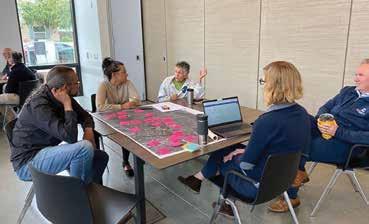
As
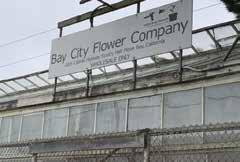

The Coastside is finally getting serious about creating housing for farmworkers and other lowincome residents. The Half Moon Bay City Council rejected appeals to the planning commission’s approval of the 555 Kelly project, which would provide 40 units of housing for senior farmworkers.
Puente de la Costa Sur, a nonprofit organization serving the south coast, formed a new subsidiary, Puente Housing Solutions LLC, that acquired a former high school (and later, nursery) property with plans to improve and expand housing available at the site.

San Mateo County, meanwhile, shelved plans to acquire the former Bay City Flower Company complex, a large property outside of Half Moon Bay that advocates hoped could become a housing and community center. Without giving specifics, the county said their due diligence revealed that the property would not be suitable for the intended purpose.






From staff reports
Pillar Point Harbor was named top harbor on the Pacific Coast - and sixth best in the country - by the US Harbors website. It was Pillar Point’s first time on the top harbors list, which tends to favor east coast ports. Just in time for the honor, the Harbor District that oversees Pillar Point opened a long-delayed public restroom and shower facility that will make the location even more appealing.

By Ashton J. Hacke, Coastside News
The San Mateo County District Attorney’s Office decided not to file any criminal charges against two Pacifica Police Officers involved in a fatal shooting earlier this year, finding that the lethal force was justified.
By Cameron Fozi, Bay City News
Pacifica’s finest continued to be busy, chasing down and arresting a man accused of domestic violence after a two-hour standing. No lethal force was used. COASTSIDE


INTRODUCE YOUR
It’s likely that those who provide your insurance, or do your dry cleaning, or grow your vegetables, or figure your taxes are friends and neighbors as well as business owners and employees. In this new special section, Introduce Your Business , you can take a look at the faces behind the storefronts, learn about their businesses and discover how they got started. Local businesses help shape the Coastside and nearby communities by providing goods, services and vital employment for our citizens.
Tell readers who you are, what you do and how they can reach you. Each business profile is a one-third page advertisement within the new Introduce Your Business special section in the September print edition of the COASTSIDE Magazine.
Reserve your space before August 16, 2024 by contacting your COASTSIDE Magazine representative or email advertising@coastsidenewsgroup.com for more information.

Born Michelle Lynn Beasley on September 2, 1962 in Patterson Ca. to Stan and Barbara Beasley, Shelly, as she was always known, passed away on June 17, 2024 in her home at Folsom Ca. at the age of 61 years. Growing up in a family of athletes, she naturally became an excellent athlete herself, excelling in volleyball, basketball and tennis at Turlock High School where she earned a lifetime “gold pass” because of her success on the courts. Attending first Modesto Junior College and then graduating from Chico State University with a degree in physical education, she turned her love of sports and fitness into a career as a PE teacher at Sutter, and then Burlingame High Schools for 32 years before retiring in 2020. She coached varsity volleyball, basketball and softball, and was especially recognized as an outstanding volleyball coach, winning numerous league and section championships. More importantly, she was beloved by the students whom she taught and mentored.
Wherever she lived between Turlock, Chico, Yuba City, Half Moon Bay and finally Folsom, she quickly built friendships that lasted her lifetime. She was loyal, loving, protective, generous, funny, outgoing, and a very beautiful person. Always ready to have fun, she loved vacationing in Tahoe with her family, cruises and trips with great friends, kayaking with her husband Brian, the Russian River, and spending quality time in Turlock with her mom, sister and family. She also had a great love of giant dogs. English Mastifs Bella and Duke were also family to her, even though she had to buy a large delivery van to transport them because of the enormous size.
Most importantly she dearly loved her two children, Haley and Derek. She was a great supporter and cheerleader of all their various activities growing up, and was extremely proud of the adults they have become.
Shelly is predeceased by her father, Stan, and is survived by her husband, Brian Koski, mother, Barbara Beasley, sister, Pam (Tom) Tyler, brother Rick Beasley, daughter Haley (Spencer) Nazar-
TO PLACE AN OBITUARY in the Coastside magazine, please go to www.pacificatribune.com/place_an_ad/obituaries/ www.hmbreview.com/place_an_ad/obituaries/ or scan QR code.
Carroll, son Derek (Arijana) Nazar, nephews Mason Beasley, Brett and Scott Tyler, nieces, Carlie Beasley and Jordan Tyler, in addition to so many friends and other relatives.
Despite the heartbreak we are all feeling with losing her, there will be a celebration of her life at the Oceano Hotel Grand Ballroom in Half Moon Bay, Ca. on Sunday, August 11th, from 1:00 - 4:00 p.m. All are welcome to attend.
There will be a private family burial at 10:00 a.m. on Aug 2nd at Lakewood Cemetery in Hughson, Ca.
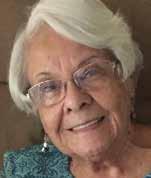
Joyce Berry died peacefully June 17, 2024, at age 91 after battling pneumonia. Born in Hanford, CA, she met her husband Donald Berry in college, and raised their two children Richard and Janet in Half Moon Bay, where they lived for 44 years before moving to San Jose to be closer to family. Joyce worked at SRI starting as a typist, becoming the supervisor of technical illustrators and lab report coordinator from 1965-1997. Wherever Don and Joyce lived or worked, they made lasting, close friends with whom they shared community projects, social gatherings, and a special interest of theirs—sports. They enjoyed many seasons as 49er ticket holders, and attending SF Giants games. They travelled many miles to watch their grandkids activities, sports or otherwise, always being present in their lives. Joyce was preceded in death by Donald in 2016. She is survived by Richard (Pam) and their 2 children and 5 grandchildren and Janet (Kendall) and their 4 children and 6 grandchildren. Joyce was deeply loved by them all and will be greatly missed.
Rika Hendricks Rika F. Hendricks, a muchloved friend to many, wife, mother, grandmother, and great-grandmother, passed from this life unto the next on December 15, 2023 in Providence, RI to join her Heavenly Father, husband, and many cherished pets. Her son, daughter-in-law, and grandsons, Rick III and Luke, were with her



during her last hours as she took her final breath in peace.
Rika was born on February 22, 1938, in Haarlem, Noord-Holland, Netherlands to Cornelis and Christina (Van Tuinen) Kraan.
This was the beginning of an amazing life story filled with adversity, humor, love, and resilience. When described by those who knew her best, the words most used are humorous, generous, meticulous, proud, caring, kind, loving, quality, elegant, and spirited.
Rika is survived by her son Rick Hendricks II and daughter-in-law Lori Daiello of Warwick, RI; her daughter Melanie Hendricks of Jackson, Georgia; her four grandchildren: Rick Hendricks III (Seattle, WA), Luke Hendricks (Washington DC) and his wife Regina, Lee Williams (Jackson, GA) and his wife Erica, and Jordan “JT” Hendricks (West Palm Beach, FL) and his wife Kadda; and five great grandchildren: River, Carice, Makayla, Lester, and John Hendricks. She was preceded in death by her husband Richard in 1996.
There will be a Celebration of Life and interment at the San Francisco Columbarium on August 9th at 1030am.(https://www.dignitymemorial.com/funeral-homes/san-francisco-ca/sanfrancisco-columbarium-funeral-home/8131).
Memorial donations may be made to The Humane Society of the United States (https://www. humanesociety.org).
For a more in-depth obituary and to share memories and condolences please visit https:// www.woodlawnri.com/obituary/HendrikaRikaHendricks.
Todd Robert Ortega, of San Mateo, CA, passed away on June 11, 2024 after a 6-day battle on life support, ultimately ending in heart failure.
Todd was born on February 25, 1972 to Ralph and Marcia Ortega in San Francisco, CA at UCSF Hospital. Todd lived in San Bruno, CA until the age of 4 years, then moved to Montara, CA where he graduated from Farallone View

Elementary. He then moved to Healdsburg, CA where he attended and graduated from Healdsburg Junior High School. After that, he decided to move back to Montara, and he attended Half Moon Bay High School in Half Moon Bay, CA.
Todd was known as someone who was influential, protective, loving, kind, and a big teddy bear. Most importantly, he was a father, a son, a brother, a cousin, and so much more. Todd enjoyed fishing, hiking, camping, riding motorcycles, playing baseball and wrestling. He really enjoyed working on cars. He also had a great love of music and dancing. Most of all, he loved hanging out with his friends and family. He would give you the shirt off his back if he thought you needed it.
In 1992, Todd married Cynthia Hamilton at North Lake Tahoe, Nevada. Todd and Cyndi went on to have one child, Chellsie Allison Ortega.
Todd was predeceased by his brother, James Anthony Ortega.
He is survived by His daughter, Chelsie Ortega of Grass Valley, CA; his father and stepmother, Ralph and Dawnna Ortega of Healdsburg, CA; his step-father and mother, Stephen and Marcia Doty, of Auburn, CA; and his sister, Linda Ortega of Auburn, Ca.
A celebration of life will be held at Harmonies Hair Salon at 245 Main St., Half Moon Bay, CA 94019 on Saturday, July 27th at 3pm Friends and family are encouraged to attend.
In lieu of flowers, the family requests donations be made to National Alliance on Mental Illness (NAMI, an organization that Todd’s family feels strongly about.
August 8, 1943 – July 7, 2024
siblings Dennis Walker and Barbara (Walker) Nevotti. It was at Mission High School in San Francisco that she met her husband of 64 years, Steve Riordan and they married on 3/1/60.
Steve and Sandy were quickly off to Whidbey Island, WA where Steve was stationed in the Navy Air Force and then returned to San Francisco in 1962. They found their lifelong home in Pacifica Ca to raise their 3 children. Sandy pursued a career in accounting and payroll working for The Gap, Guy F. Atkinson Construction and Golden Gate Cardiology. Later Steve and Sandy built a vacation home in Groveland Ca where friends and family gathered often, and cherished memories were made.
Sandra is remembered for her warm and welcoming style to all she met, her devotion to her children and grandchildren, creativity, wit, sense of adventure and her delicious meals made with love for her family and friends.
She is survived by her husband of 64 years, Steve Riordan, her 3 children, Kathy Allen, Karen Riordan-MacPhee and Kim Paoli and her grandchildren, Jason, Amber, Anthony, Andrew and McKenzie, plus the newest addition, her great-grandchild, Jameson.
Memorial services to be held at a later time.

can too.
He was a huge fan of Joe Montana, Jerry Rice, his wife's cooking, Clint Eastwood's Spaghetti Westerns, and John Denver. Jae loved to sing as well. He was the bass leader in the choir and an elder at his church. July the 19th, 2024 was also his and Nam's 49th anniversary.
Jae was well loved and will be missed dearly.
A service for Jae Duk Song will be held on Saturday, August the 3rd at Cypress Lawn Newall Chapel in Colma (1383 El Camino Real) from 12:00pm - 2:00pm. All are welcome to celebrate the life of a wonderful man.
Barbara Jeanne West passed away peacefully on June 30, 2024 at the age of 87 years old.

Barbara was born on October 7, 1936 in Corcoran, California. Throughout her life she lived in Tulare, Valley Springs, Stockton, San Luis Obispo and Atascadero. She spent most of her time in Half Moon Bay where she lived during her early years and then again later in life.
Barbara’s pride and joy was her only son, Gary Francis. Barbara married Charles Francis in 1957 and they were blessed with Gary in 1959. In 1975 she remarried to Leasel (Lee) Boyd West, a Navy veteran. They lived a lovely life enjoying time with their friends and on their boat in San Luis Obispo’s Morro Bay. Lee passed away in May 1987. Barbara spent the next twenty years in their Valley Springs home until moving back to Half Moon Bay to be closer to her son. Gary took wonderful care of Barbara for the last 14 years until her passing.
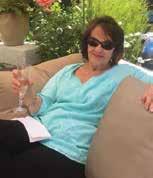
Sandra Jean Riordan was born in San Francisco on August 8, 1943 to parents Lillian (Palaya) Walker and Adolf Walker. Sandra passed away at home surrounded by family in Pacifica, Ca. on July 7, 2024. With fond memories of riding the cable car to school, Sandy was raised in San Francisco, Ca. with her two
Jae was kind, selfless, and hard-working. A man of few words but loved the company of others. Surrounded by family, Jae Duk Song passed away peacefully at his home in Pacifica on July the 19th, 2024 at the age of 83. Born in Seoul on May the 13th, 1941 during the Japanese occupation of Korea, Jae lived through the Korean War, served in the South Korean Army, and eventually immigrated to the Bay Area with his wife Nam in the 70s. It was Jae that decided to settle in Pacifica, mainly, because of his love of fishing. Jae was an avid fisherman and a staple on the beaches from Half Moon Bay to San Francisco. His go-to spot was Gray Whale Cove that he affectionately called "The Nudie Beach."
Jae and Nam proudly owned and operated Linda Mar Dry Cleaners for 44 years. They purchased a house in the Back of Valley and raised four children (Peter, David, Jonathan, and Janet). He would often explain that his achievements in the US would not have been possible in South Korea. Jae loved his home country, but because of the opportunities the US provided him as a young man, he became a proud Ameri-
Barbara is survived by her son Gary Francis, grandchildren Emma Francis-Daughtrey (Perry and Penelope), Amy Francis, nephew Bryan Reid (Mindy, Kyle and Lynn), great nephews Anthony Porchia (Jenna, Lexi and Miles) and Vincent Porchia who all lovingly referred to her as Aunt Deannie.
The family would like to thank the Fremont Hills Memory Care staff and Bristol Hospice for the wonderful and loving care they gave Barbara over the last year.
We extend a heartfelt invitation for you to join us for a celebration of life that will be held at the Portuguese Cultural Center in Half Moon Bay, CA on Thursday July 18th, 2024 from 12-2.
COASTSIDE
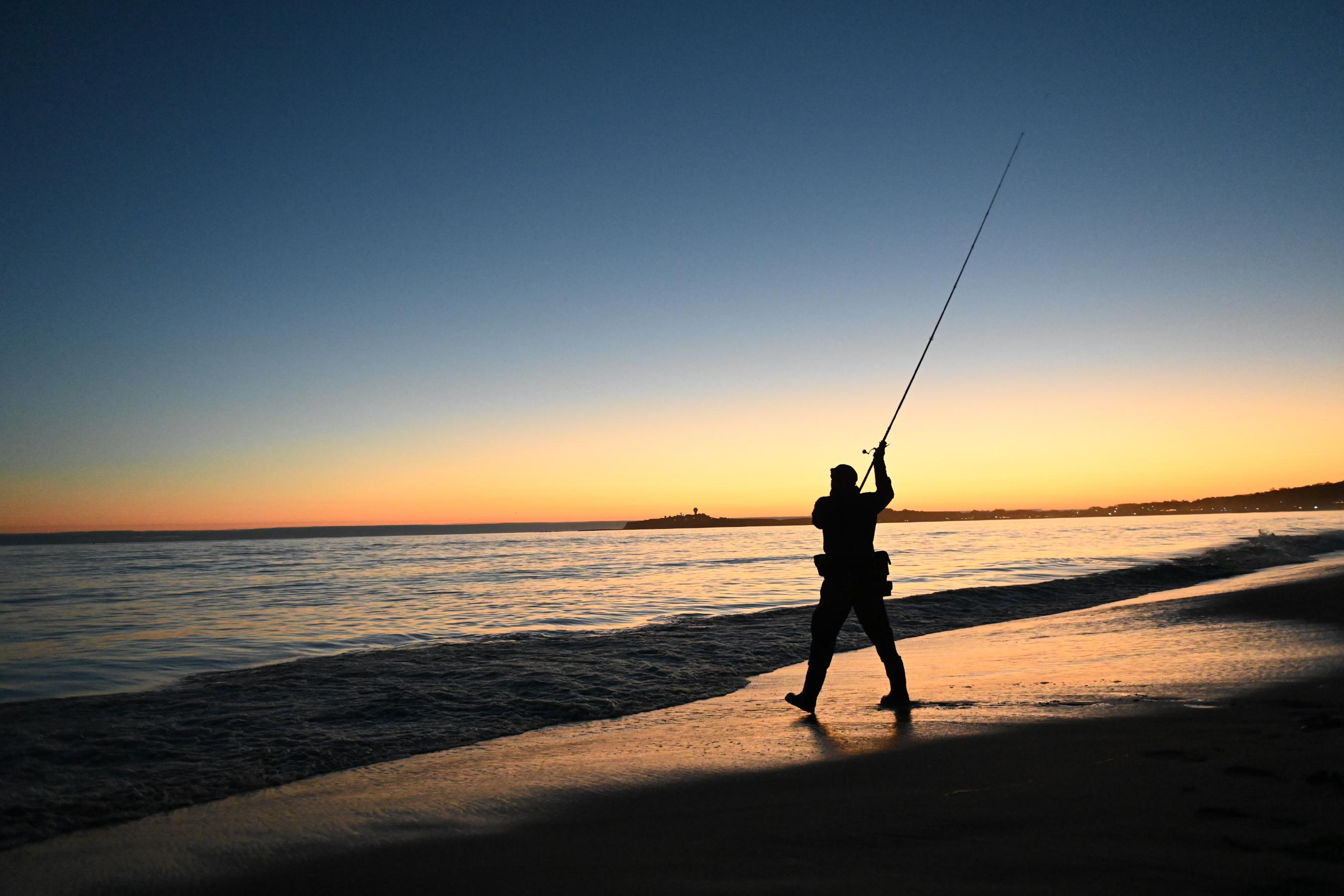


Do you have an event coming up? List it free on our online calendars at hmbreview.com and/or pacificatribune.com.

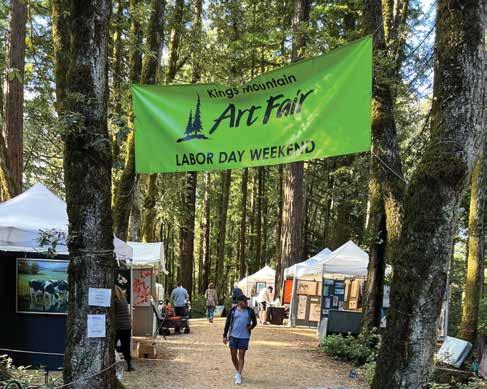
Late summer marks the start of festival season on the Coastside, with a series of traditional events showcasing the creative, fun spirit of the region and bridging beach days to the fall. For more than 30 years, the PESCADERO ARTS & FUN FESTIVAL has started things off with a weekend of music, food and art displays, including an annual show organized by the South Coast Artists Alliance. Mostly, though, PAFF is a time for the community to gather and, yes, have some fun! This year the party takes place on August 17 & 18 on the grounds of the Pescadero I.D.E.S. Details about the musical line-up were released after press time.
WHEN: August 17 & 18
WHERE: I.D.E.S., 22 Stage Rd., Pescadero
MORE INFO: pescaderoartsandfunfest.org
Since 1963, Labor Day has marked the occasion for the annual Kings Mountain Art Fair featuring a juried line-up of artists. Proceeds from the event help purchase vehicles and supplies for the Kings Mountain Volunteer Fire Brigade and provide support for the community center building.
WHEN: 10 a.m. - 5 p.m., August 31, September 1 & 2
WHERE: Kings Mountain Community Center and Firehouse, 13889 Skyline Blvd., Woodside MORE INFO: kingsmountainartfair.org
Art galleries throughout the Coastside will feature new exhibitions as summer turns to fall.

Edward A. Daniels, Esq.

Since 1964, we have been a small-town firm committed to the highest standards of client representation.
Our transactional team focuses on estate planning and administration, from simple wills to complex trusts. We also counsel on business matters, including corporation and LLC formation.
Our litigation team represents both plaintiffs and defendants in enforcing their rights in personal injury, probate and trust, class action, employment and business matters.
Corey, Luzaich, de Ghetaldi & Riddle LLP
Your Attorneys on the Coast

625 Miramontes Street, Suite 106, Half Moon Bay | 650-726-7578 | www.coreylaw.com

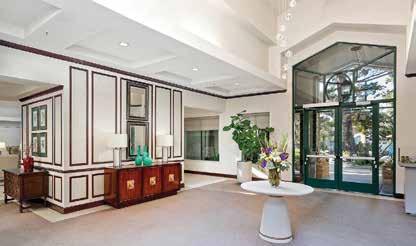

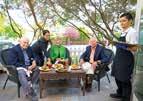

Garden Chapel Funeral Directors serves families across all faiths and cultures, with dedicated personal service, helping each family create a celebration of life for their loved ones.
Although there are many decisions you may have to make, we assure you that we will guide you through the entire process every step of the way.
Please call us to discuss your needs with a knowledgeable and compassionate funeral director.
Garden Chapel is independent and Veteran-Owned by Al Banfield, licensed Funeral Director.

LIST YOUR EVENT
Do you have an event coming up?
List it free on our online calendars at hmbreview.com and/or pacificatribune.com.

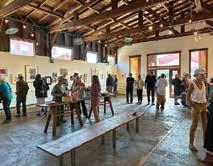

M Stark Gallery in Half Moon Bay presents an invitational group exhibition featuring contemporary landscapes and autobiographical works by established and emerging artists from the area. Paintings, works on paper, textiles and sculpture by artists chosen by gallery owner Marianna Stark offer something for everybody.
WHEN: Fridays, Saturdays and Sundays through Sept. 1
WHERE: M Stark Gallery, 727 Main St., Half Moon Bay MORE INFO: www.mstarkgallery.com/
The 12 members of the Madrone Arts Collective in Pescadero offer their interpretations of the shadow
play theme by creating 12-foot-by-4-food muslin panels that will be suspended from the gallery’s rafters, filtering the natural light that illuminates the ongoing summer exhibition.
WHEN: August 2 - 29
WHERE: Madrone Arts, 216 Stage Rd., Pescadero MORE INFO: www.madronearts.com/exhibitions
The unique 50/50 exhibition returns to Sanchez Art Center for the 16th year. Juried this year by Andra Norris, owner of Andra Norris Gallery in Burlingame, the show features 50 works by each of 50 selected artists, all in a standard 6-inch-by-sixinch format.
WHEN: September 6 - October 6
WHERE: Sanchez Art Center, 1220 Linda Mar Blvd., Pacifica MORE INFO: sanchezartcenter.org/index.html

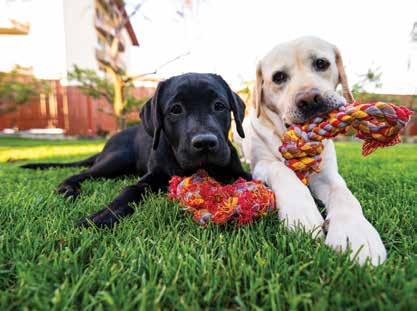




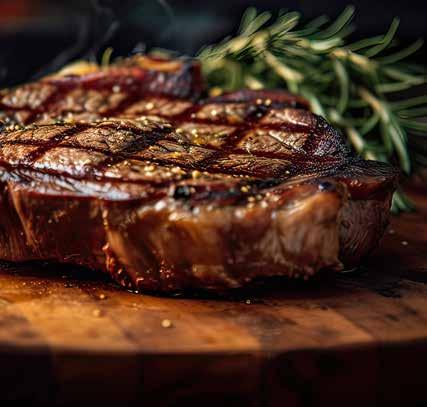
By Ashton J. Hacke

BREED: Russell Terrier AGE: 2 years old
Gordon sits on an old John Deere tractor at Contreras Farm in Montara, California, on July 19, 2024. Along with his siblings Benny and Pumpkin, Gordon is a working dog who has captured 24 gophers this year on the flower farm. When not working, Gordon enjoys taking long solo hikes in the Montana mountains, according to neighbors who also hike in the area and see the Russell Terrier on a mission of his own out on the trails.
- Ashton J. Hacke

Story by Maggie Mah
Photos by Pixabay
While much of California has been sizzling in temperatures of 100 degrees plus, coastal areas like Half Moon Bay and Pacifica have been topping out at a balmy 85. Sun-deprived coastal residents may rejoice but plants that are accustomed to lower temperatures and a protective marine layer may not be happy. Higher ocean temperatures and other factors associated with climate change mean that periods of warmer weather and longer hours of direct sunlight are expected to be more frequent.
The good news: there are simple things you can do to make your garden more resilient to swings in temperature and changes in the environment. Even better, it’s a smart thing to do no matter how warm the wind blows.
If you can only do one thing, this is it: spread well-aged organic compost on all your garden areas, including planters and pots. Compost and other organic materials enhance the moisture-holding ability of the soil. When
there is enough, the soil becomes spongy and holds water, yes, like a sponge. It doesn’t take a lot to make a big difference: increasing the organic matter by as little as one percent can double the water holding capacity of the soil. You may need to water less often once you start adding compost. Even better, the water in the soil becomes more available to plant roots and is used more efficiently.
In addition to the hydrological benefits, good quality compost contains vital nutrients, a world of beneficial organisms and improves soil structure - all of which improves the ability of plants to cope with changes in the weather.
Properly made “backyard” compost is by far the best option but if that is not feasible, your best bet is to buy compost in bulk from a reputable supplier. Buying in bulk vs. in prepackaged bags gives you the opportunity to evaluate what you are buying. Good compost should be rather dark in color, have a sweet, earthy aroma and crumbly texture.
Pre-packaged compost, although convenient, is designed to be stable for long periods of time on the shelf and varies widely in quality and composition.
Top off your layer of compost with good quality organic mulch such as chipped or shredded tree trimmings. A 3-5 inch layer will hold soil temperatures down, keep roots cool and reduce water evaporation. Mulch will also help to suppress weeds by blocking the sunlight needed for seeds



to germinate. While it’s doing all that, mulch will slowly break down and contribute additional organic matter to the soil. Arborists are usually happy to have outlets for “chippings” so this kind of mulch can be had for little or no cost.
No matter how you do it, watering is best done early in the day. This reduces evaporation, allows plants to take up water and be ready when temperatures climb. If you use an automatic irrigation system, check it for leaks, clogs and faulty emitters to make sure it’s working properly. Although it may seem counterintuitive, it’s usually better to water less frequently but for longer periods of time. This is especially true of trees. The practice, known as “deep watering,” sends the roots farther down into the soil to obtain water, ultimately making them more resilient to drought conditions.
Although mulch helps to minimize unwanted vegetation, persistent weeds will inevitably crop up here and there to compete with your landscape plants and edibles for moisture and nutrients. It turns out that the traditional method of pulling weeds is counterproductive. Yanking and/or digging them out disturbs the soil, helps spread seeds and ultimately, creates more vigorous and determined weeds. What to do? Instead of pulling, cut the stem off close to or slightly below ground level with garden shears. The weed in question will not grow without the ability to photosynthesize and the remaining root will decompose and eventually enrich the soil.
Plants in above-ground pots and planters are especially vulnerable when temperatures climb. When it comes to summer planting, it’s better to go big. Larger containers hold more soil which means better moisture retention and less temperature fluctuation.
Pots made of terra-cotta, concrete or glazed ceramic warm up more slowly than plastic as do reflective and lighter colored surfaces.
Also: arranging pots in clusters and placing them close together creates a “mini” micro-climate that helps keep temperature and moisture on a more even keel.
Removing flowers that are past their prime keeps them looking nice but “deadheading,” as the practice is known, also keeps flowering plants producing blooms longer, thus preventing them from setting seeds, a process that requires a lot of energy. Since warmer temperatures can be stressful for many plants, regular “grooming” will keep them healthier and blooming longer. And pollinators will thank you!
When temperatures climb, avoid giving plants an extra dose of fertilizer, especially those that are high in nitrogen. Application of fertilizer causes the plant to put out more green growth, thereby increasing the need for water and nutrients. Since those things may be less available during hot weather, fertilizer can be detrimental.
Warm, sunny days may make working in the garden even more enjoyable but take a cue from your plants: keep hydrated and stay cool!
You can find more information on composting, hot weather gardening and California native plants at the University of California, Agriculture and Natural Resources catalog: anrcatalog.ucanr.edu. COASTSIDE
Maggie Mah is a UC Master Gardener of San Mateo and San Francisco Counties.
▸ Celebrating, island style
Senior Coastsiders and the Coastside Adult Day Health Center in Half Moon Bay celebrated 10 years at their Main Street location with a community luau. The two organizations support successful aging for Coastside seniors by providing services and resources to meet the needs of local seniors and to enrich healthy and active lives. Staff, volunteers, local seniors and members of the community from all generations got into the island spirit with a hula performance, live music, a free meal featuring Hawaiian specialties and lots of leis and Hawaiian shirts.
Photos courtesy of Senior Coastsiders


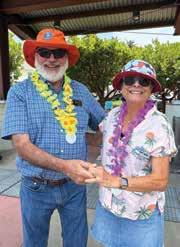

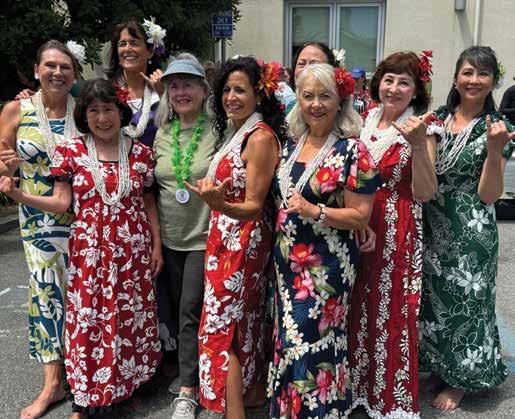
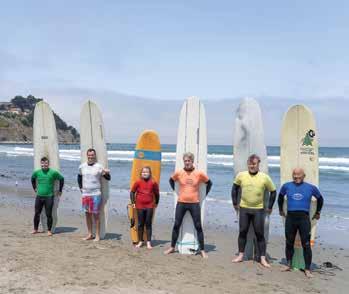


▸ Stoke knows no age limits
Twenty-four years ago Pacifica resident Roy Earnest (director of the documentary “Surfing for Life”) created the Kahuna Kupuna surfing competition that takes place annually at Linda Mar Beach in Pacifica. Kahuna Kupuna means “Big Chief Wise Elder,” and the competition features experienced surfers over 40 years young, who, despite possibly hitting retirement age, continue to hit the waves and energize their lives by riding the surf. The event itself is also aging well. This year’s Kahuna Kupuna was Peter Schultz, 74. He was joined by others in his age category, along with children, grandchildren and some younger surfers who could participate in team categories. Photos by Ashton J. Hacke

Less than two years since it opened, M Stark Gallery on Main Street in Half Moon Bay has become a touchpoint for local artists on the Coastside and the surrounding areas. Between solo exhibitions featuring Coastside artists, gallery director Marianna Stark decided to invite some of the other artists she has encountered in the area to contribute pieces to “Greetings from the SF Peninsula,” a group show highlighting a range of works created in the communities south of San Francisco down to San Jose. Artists and admirers gathered at the gallery for the opening of the exhibition.
Photos courtesy of M Stark Gallery
